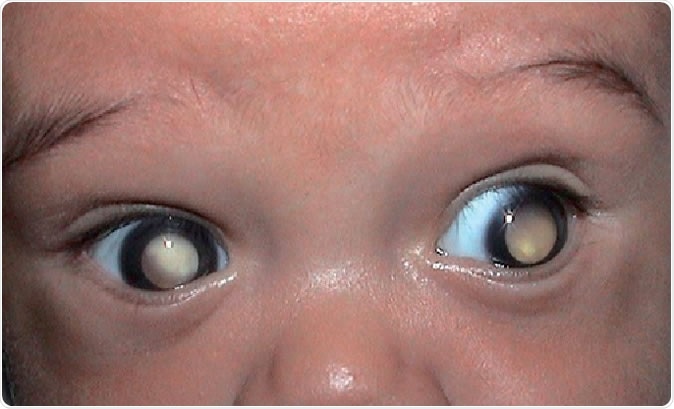
“Leukocoria and the red reflex test”
According to the team of scientists, parents take pictures of their babies and the app could tell from these pictures if the eyes of the babies are normal. Lead researcher Bryan Shaw lost one of his son Noah’s eyes to cancer five years back. His son is 11 years old now. Since then he has been working on developing an app that could help doctors detect eye problems in babies at an early stage so that there is the prevention of loss of vision or even lives.
The reflection of the eyes in that case also glowed white - a sign that doctors called “white eye” or leukocoria. Shaw explained, “We had white eye showing up in pictures at 12 days old.” This was months before Noah was diagnosed with the retinoblastoma he said.
Since his son’s diagnosis, Shaw has been working with Greg Hamerly, Ph.D., associate professor of computer science and Baylor senior University Scholar Micheal Munson (first author of the study) and other colleagues at Baylor University, Texas, Massachusetts Eye and Ear Infirmary, Harvard Medical School and Dana-Farber Cancer Institute, to develop a smart phone app called CRADLE (ComputeR Assisted Detector LEukocoria). This app is essentially software that can scan the photos for signs of the white eye and other eye abnormalities when flash is shone on them.
Shaw said, “If I would have had some software in telling me 'Hey, go get this checked out,' that would have sped up my son's diagnosis and the tumours would have been just a little bit smaller when we got to them. There might have been fewer.” He explained that their team created this app that uses Artificial Intelligence to find a white eye. White eye may be the sign of several eye diseases says Shaw, including pediatric cataracts, Coats’ disease and retinoblastoma.
To develop and hone the app, the team analyzed over 50,000 pictures of 40 infants. Half of these babies had been diagnosed with an eye disease while the other half had normal eyes. The app was used to scan all the pictures and pinpoint the ones that had eye disease. White eye or leukocoria appears as a paler version of the pupil explained the team.
Shaw explained, “On average the app detected white eye in pictures collected 1.3 years before diagnosis.” The app was accurate in 80 percent cases wrote the researchers. This meant that the app could help alert parents much before the diagnosis of the eye disease usually takes place. This may improve treatment and may save vision and even save lives, he said.
According to Shaw, “We wanted to be able to detect all hues and intensities of leukocoria. As a parent of a child with retinoblastoma, I am especially interested in detecting the traces of leukocoria that appear as a 'gray' pupil and are difficult to detect with the naked eye.”
The results of their test with the app on the 40 babies showed that sometimes the app correctly detected white eye while sometimes it missed the diagnosis. It also sent out alerts when there was no white eye in some cases - a false positive. Experts have opined that while this false positive rate and detection where the disease is not present could be problematic, the app is still a great advancement of technology and could help save vision in millions of babies.
Experts have also said that soon similar apps using AI could be used as the sole screening method for eye diseases in not only babies but also adults. They believe that with time app such as these could become more accurate and AI would get smarter making disease detection easier, cheaper and more cost effective.
According to lead author Munson, 80 percent detection of leukocoria in children less than 2 years is considered to be the gold standard for a screening test. Since this app could detect the condition with 80 percent accuracy, it could be considered for use.
Munson said, “I just kept the goal in mind: saving the sight and potentially the lives of children throughout the world.” According to Shaw, in order to train the AI on eyes of babies from different ethnicities, they need more pictures of babies with or without white eye of Asian and African descent.
He hopes that this would help develop the app to become more globally relevant for use and make it a more accurate screening tool. At present the team is working with around 100,000 additional photos to reduce the rates of false positives he said.
The team wrote that the app can be downloaded free under the name, “White Eye Detector.”
Journal reference:
Micheal C. Munson, Devon L. Plewman, Katelyn M. Baumer, Ryan Henning, Collin T. Zahler, Alexander T. Kietzman, Alexandra A. Beard, Shizuo Mukai, Lisa Diller, Greg Hamerly and Bryan F. Shaw, Autonomous early detection of eye disease in childhood photographs, Science Advances 02 Oct 2019: Vol. 5, no. 10, eaax6363, DOI: 10.1126/sciadv.aax6363, https://advances.sciencemag.org/content/5/10/eaax6363






No comments
Post a Comment